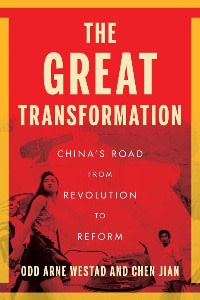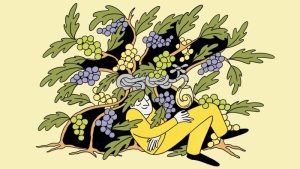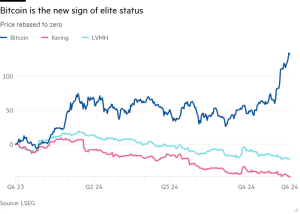The Great Transformation — the stifling effects of Mao’s ideology

Unlock the Editor’s Digest for free
Roula Khalaf, Editor of the FT, selects her favourite stories in this weekly newsletter.
In spring 1977, as China’s Communist leadership took stock after the death of Mao Zedong, the new culture commissar busied himself publishing the fifth volume of the late Chairman’s selected writings. But there were problems, we learn in Chen Jian’s and Odd Arne Westad’s superb history of China’s transition into and out of the Cultural Revolution. The paper that had been waiting in storage for this moment had gone mouldy; there was not enough electricity to run the printing presses; the typographers worked at a snail’s pace, terrified that any misprints would result in death.
The episode is a metonym for China’s ills at the end of the Mao era: governance, society and the economy were stifled by ideology. In parts of east China, people were starving. But only eight years later, a revolution had happened. Propelled by market mechanisms, China’s economy was growing annually at 13.5 per cent. People were questioning the Communist ideology that had transfixed and terrified them for decades. In The Great Transformation, Chen and Westad — two of the best archival historians of Communist China writing today — coolly but vividly recount the extraordinary drama of this metamorphosis.
They set out their central thesis in the first and last chapters. The transition out of the Mao era transformed China and the world: “China went from being a dirt-poor, terrorised society in the late 1960s to one of hope and expectation by the mid-1980s.” Most of the book in between is light on editorialisation; the authors let their compelling first-hand material — including a mass of Chinese-language documents, memoirs, letters and histories — speak for itself.
They begin with the anarchic brutality of the Cultural Revolution: the public humiliations that drove even hard-boiled security supremos to suicide; Red Guard plundering of the country’s most sacred sites; Mao’s steep physical and mental deterioration in his last five years; the economic crisis that his obsession with ideological purity generated.
But The Great Transformation also identifies a return to pragmatic entrepreneurialism in the late Mao era, born out of exhaustion and exasperation with the Cultural Revolution. China’s remarkable rapprochement with the US in 1972 began to open the country to American imports, many of them paid for by smuggled antiques, silks, live animals and guns.
The book tracks the resurgence of Deng Xiaoping — twice purged in Mao’s last decade — after 1972. Deng was a paradox: an advocate of market freedoms and authoritarian Leninist. During his time as supreme leader (1978-97), business became “an integral part of Chinese society” once more; but every significant new company felt “the long reach of the state”.
Almost every page contains an eye-opening detail. Lin Biao (Mao’s second-in-command until his alleged assassination attempt on the chairman and death in a mysterious plane crash) suffered from a phobia of pens (they made him nervous and sweaty). We learn more of the power paralysis and courtly intrigues around Mao in his final months, when access was controlled by the triumvirate of a nephew, a former lover and an ex-dancer. In the early 1980s, a group of Beijing Buddhists rented their vandalised temple to an ice cream start-up run by monks. Guards on the Vietnam border created a travel operator called Watchful, offering a frontier tour with complimentary lunch.

The history of China’s “great transformation”, the authors argue, is key to understanding how China became the authoritarian developmental state that it is today. First, they emphasise that much of China’s dazzling economic growth over the past 40-some years was due to contingency and individual entrepreneurs rather than centralised political planning.
Second, although Deng suffered terribly in the crazed dictatorship of the Cultural Revolution, through the 1980s and 1990s he never contemplated political alongside economic reform; his status as a revolutionary elder ensured that his views would trump those of his more liberal junior ministers. The epochal upheaval of the 1970s is thus “also a story of missed opportunities” for breaking with autocracy’s “corruption, mismanagement and widespread abuses”.
China today badly needs accountability with the past, through the writing of carefully documented history, so that its people can make critical sense of the decisions and choices that have produced their current government and society. Thanks to their strict control over public historical narratives, China’s rulers can preach a singular view that attributes every success to Communist party wisdom, and every setback to “traitors or foreigners”. But by meticulously chronicling a far messier reality, The Great Transformation evokes the multiple paths, ideas and possibilities that have shaped, and continue to shape, China’s present.
The Great Transformation: China’s Road from Revolution to Reform by Odd Arne Westad and Chen Jian Yale University Press £30, 424 pages
Julia Lovell is the author of ‘Maoism: A Global History’
Join our online book group on Facebook at FT Books Café and subscribe to our podcast Life & Art wherever you listen
#Great #Transformation #stifling #effects #Maos #ideology






